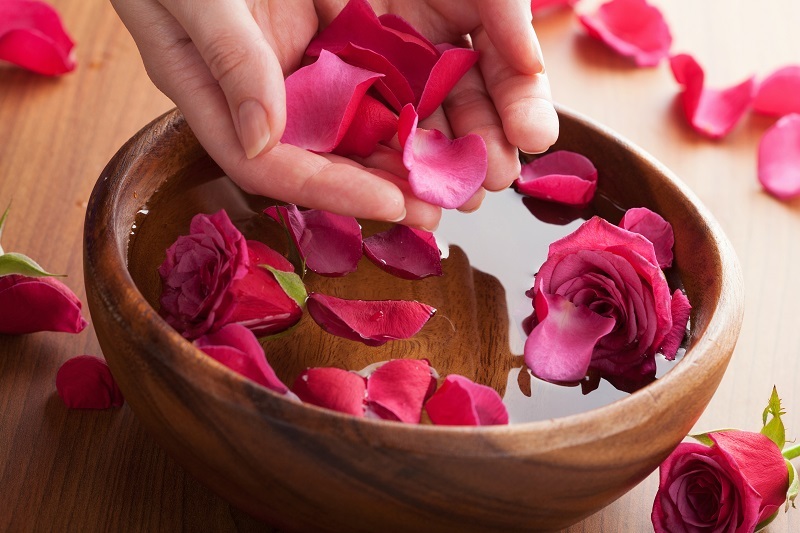Orchid Care Essentials: A Step-by-Step Guide
Posted on 26/06/2025
Orchid Care Essentials: A Step-by-Step Guide
Orchids are renowned for their exotic beauty, sophisticated blooms, and the touch of elegance they add to any space. While their allure is undeniable, many believe these stunning plants are difficult to care for. The truth is: with the right knowledge and approach, orchid care can be rewarding and surprisingly straightforward.
In this definitive guide, we'll break down the essentials of orchid care step-by-step. Whether you're an orchid novice or seeking to refine your plant parenting skills, follow along to unlock healthier, longer-living blooms and lush foliage for your treasured orchids.

Understanding Your Orchid
There are over 25,000 species of orchids, but the most common types found in homes include:
- Phalaenopsis (Moth Orchid): Popular for its easy care and frequent, long-lasting blooms.
- Cattleya: Known for large, fragrant flowers and a preference for more light.
- Dendrobium: Hardy and versatile, often found in bouquets and arrangements.
- Oncidium: Sometimes called the "Dancing Lady," loves bright, indirect light.
Before you dive into caring for your orchid, identify its species. This will help you customize your care routine for optimal results, as each variety may have slightly different requirements.
Orchid Care: The Basic Requirements
1. Ideal Light Conditions
Light is a cornerstone of effective orchid plant care. Most orchids prefer:
- Bright, indirect sunlight (east or south-facing windows are ideal)
- Avoidance of harsh, direct afternoon rays that can scorch leaves
- Artificial grow lights as an alternative, especially in winter or low-light environments
Pro Tip: If you notice leaves turning yellowish-green or reddish, this may indicate too much light. Limp, dark green leaves often signal too little light.
2. Proper Watering Techniques
Overwatering is the most common cause of orchid decline. To master watering orchids, remember these essentials:
- Water thoroughly, but let excess water drain away completely
- Let the potting mix dry slightly between waterings (typically, water once a week for Phalaenopsis with bark medium; adjust for your variety and home conditions)
- Use room temperature, non-softened water whenever possible
- Avoid letting the plant sit in standing water to prevent root rot
3. Mastering Humidity for Orchids
Orchids thrive in environments with 40-60% humidity. For indoor orchid care:
- Set orchids on a humidity tray (a shallow tray filled with pebbles and water, ensuring the pot itself does not sit in water)
- Group plants together to boost ambient moisture
- Mist leaves lightly in the morning as an additional boost (avoid excessive wetness on flowers and crown)
4. The Right Temperature for Different Orchids
Temperature is a critical element of orchid care essentials. Most common orchids prefer:
- Daytime temperatures of 65-80?F (18-27?C)
- Nighttime temperatures of 55-65?F (13-18?C)
Keep orchids away from drafts, vents, and sudden temperature changes, as this can stress the plant or inhibit blooming.
5. Choosing the Perfect Orchid Potting Mix and Pots
Unlike traditional houseplants, orchids rarely grow in regular soil. They require a well-draining orchid mix comprising materials such as:
- Bark
- Sphagnum moss
- Perlite
- Coconut husk chips
- Charcoal
Opt for pots with adequate drainage holes. Orchid roots need airflow to stay healthy and avoid rot.
Step-by-Step Guide to Orchid Care
Step 1: Selecting a Healthy Orchid
- Look for firm, bright green leaves, free from spots and blemishes
- Check roots (if visible): they should be plump and green or white, not shriveled or mushy
- Inspect flowers: avoid plants with drooping or yellowing blooms
Step 2: Preparing the Perfect Environment
- Choose a location with indirect, filtered sunlight
- Keep away from heating vents, AC units, and cold drafts
Step 3: Potting Your Orchid Properly
- Use a specialized orchid container with multiple drainage holes
- Repot your orchid every 1-2 years, or when the mix has broken down
- Ease roots into the pot; add orchid mix around them, pressing gently but not too tight
Step 4: Watering Your Orchid
- Check the potting mix with your finger: only water when an inch below the surface feels dry
- Water early in the day to allow excess moisture to evaporate
- Never let water remain in the crown (where leaves meet), as this fosters rot
Step 5: Maintaining Humidity
- Place orchids on pebble trays or use a room humidifier
- Increase air circulation around plants, but avoid direct drafts
Step 6: Fertilizing for Optimal Growth
- Use a balanced orchid fertilizer (20-20-20 or similar) diluted to half strength
- Feed orchids every other watering during growing season (spring and summer)
- Flush with plain water monthly to prevent salt build-up
Step 7: Pruning and Deadheading
- Remove faded flowers to encourage new growth
- For Phalaenopsis, cut the flower spike just above a node after blooms fade to stimulate a secondary bloom
- Prune dead or damaged leaves as needed with sterilized scissors
Orchid Care Troubleshooting: Common Issues and Solutions
Yellow Leaves
- Possible causes: Overwatering, root rot, insufficient light, or natural aging
- Solution: Adjust your watering routine, improve drainage, and ensure proper light levels
No Blooms or Flower Buds Failing to Open
- Lack of light, insufficient fertilizer, or root crowding
- Try moving plant to a brighter spot, fertilize consistently, or repot if roots are congested
Droopy, Wrinkled Leaves
- Main culprit: Underwatering or extensive root damage
- Soak the orchid, cut away dead roots, and repot in fresh orchid mix
Spotted or Moldy Leaves
- Reduce overhead watering; improve air circulation and always sterilize cutting tools
- Remove affected leaves and treat with a fungicide if necessary
Seasonal Orchid Maintenance
Spring and Summer
- Orchids enter their active growth phase; increase watering and fertilize regularly
- Monitor for pests like mealybugs and scale
Autumn and Winter
- Many orchids require a short rest period to promote future blooms
- Reduce watering and fertilizer; maintain stable temperature
- Provide adequate light as days shorten
Advanced Orchid Care Tips
Repotting Orchids
- Repot only when necessary, typically every 1-2 years
- Choose a new pot just big enough to accommodate the roots
- Trim away old, rotten, or dead roots before replanting
Encouraging More Blooms
- Maintain a day/night temperature fluctuation of 10?F for several weeks to trigger flowering
- Be consistent with fertilizer during the active growth season
- Don't relocate the plant too often; orchids like routine
Pest and Disease Management
- Isolate new plants for a few weeks before integrating them into your collection
- Regularly inspect leaves and flowers for pests
- Wipe leaves with a damp cloth; use insecticidal soap or neem oil for infestations

Frequently Asked Questions about Orchid Care
How often do orchids need to be watered?
Most orchids prefer watering once a week, with slight drying out between each session. Monitor your specific orchid's potting medium and environment, as frequency can vary depending on temperature, humidity, and pot size.
Should you mist orchid leaves?
Misting can help boost humidity, but do it sparingly and only in the morning. Avoid wetting the flowers and crown to deter rot and fungal diseases.
Why are my orchid's roots growing above the pot?
These are aerial roots, which are normal for many orchid species. They help the plant absorb moisture from the air. Do not trim unless they are shriveled or dead.
What's the best orchid fertilizer?
Any balanced liquid fertilizer formulated for orchids (like 20-20-20) works well. Always dilute to half or quarter strength and use less frequently than with traditional houseplants.
Conclusion: The Rewards of Proper Orchid Care
With careful attention to light, water, humidity, temperature, and growing medium, orchids can flourish in your home for years to come. They may seem delicate at first glance, but following these step-by-step orchid care tips will help you avoid common pitfalls and enjoy vibrant, healthy plants.
Remember: Patience and observation are your best tools in orchid care. Each variety and even individual plant may demonstrate unique needs. By learning to read your orchid's signals and adapting your care accordingly, you'll be well on your way to growing blooms that dazzle year after year.
Are you ready to embark on your orchid care journey? Start with these essentials, and soon you'll see first-hand why these captivating flowers have been coveted around the globe for centuries!
Latest Posts
Low Maintenance Plants to Boost Office Ambiance
Crafting a Hydrangea Haven: Essential Care Tips
Achieving Maximum Poinsettia Longevity at Home







